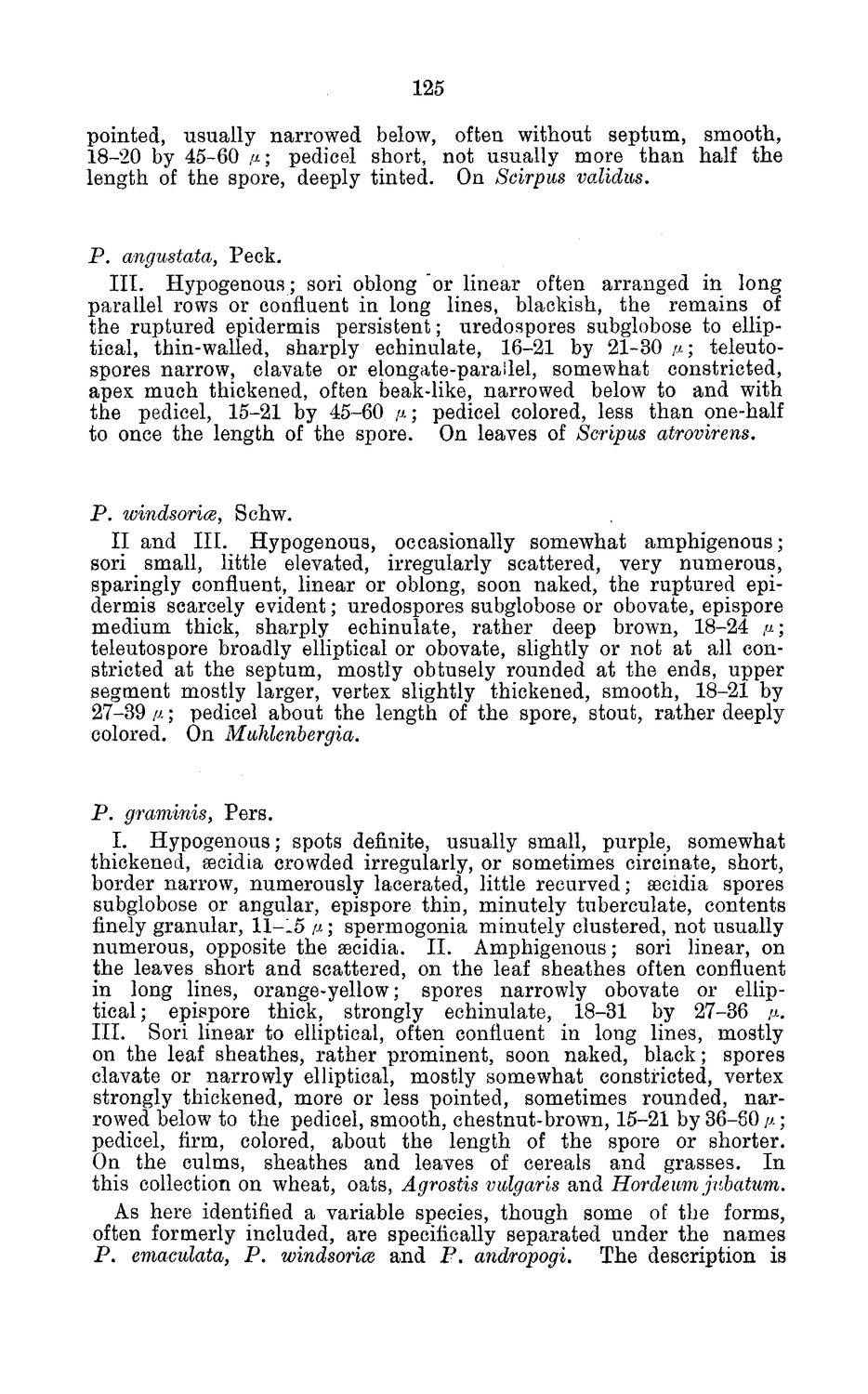| |
| |
Caption: Board of Trustees Minutes - 1884
This is a reduced-resolution page image for fast online browsing.

EXTRACTED TEXT FROM PAGE:
125 pointed, usually narrowed below, often without septum, smooth, 18-20 by 45-60 t±\ pedicel short, not usually more than half the length of the spore, deeply tinted. On Scirpus validus. P. angustata, Peck. III. Hypogenous; sori oblong "or linear often arranged in long parallel rows or confluent in long lines, blackish, the remains of the ruptured epidermis persistent; uredospores subglobose to elliptical, thin-walled, sharply echinulate, 16-21 by 21-30 /*; teleutospores narrow, clavate or elongate-parallel, somewhat constricted, apex much thickened, often beak-like, narrowed below to and with the pedicel, 15-21 by 45-60 n; pedicel colored, less than one-half to once the length of the spore. On leaves of Seripus atrovirens. P. windsoria, Schw. II and III. Hypogenous, occasionally somewhat amphigenous; sori small, little elevated, irregularly scattered, very numerous, sparingly confluent, linear or oblong, soon naked, the ruptured epidermis scarcely evident; uredospores subglobose or obovate, epispore medium thick, sharply echinulate, rather deep brown, 18-24 /*; teleutospore broadly elliptical or obovate, slightly or not at all constricted at the septum, mostly obtusely rounded at the ends, upper segment mostly larger, vertex slightly thickened, smooth, 18-21 by 27-39 p.; pedicel about the length of the spore, stout, rather deeply colored. On MMenbergia. P. graminis, Pers. I. Hypogenous; spots definite, usually small, purple, somewhat thickened, aecidia crowded irregularly, or sometimes circinate, short, border narrow, numerously lacerated, little recurved; eeeidia spores subglobose or angular, epispore thin, minutely tuberculate, contents finely granular, 11-15 y.; spermogonia minutely clustered, not usually numerous, opposite the aecidia. II. Amphigenous; sori linear, on the leaves short and scattered, on the leaf sheathes often confluent in long lines, orange-yellow; spores narrowly obovate or elliptical; epispore thick, strongly echinulate, 18-31 by 27-36 ix. III. Sori linear to elliptical, often confluent in long lines, mostly on the leaf sheathes, rather prominent, soon naked, black; spores clavate or narrowly elliptical, mostly somewhat constricted, vertex strongly thickened, more or less pointed, sometimes rounded, narrowed below to the pedicel, smooth, chestnut-brown, 15-21 by 36-60 //; pedicel, firm, colored, about the length of the spore or shorter. On the culms, sheathes and leaves of cereals and grasses. In this collection on wheat, oats, Agrostis vulgaris and Hordeum jnbatum. As here identified a variable species, though some of the forms, often formerly included, are specifically separated under the names P . emaculata, P. windsorice and P. andropogi. The description is
| |